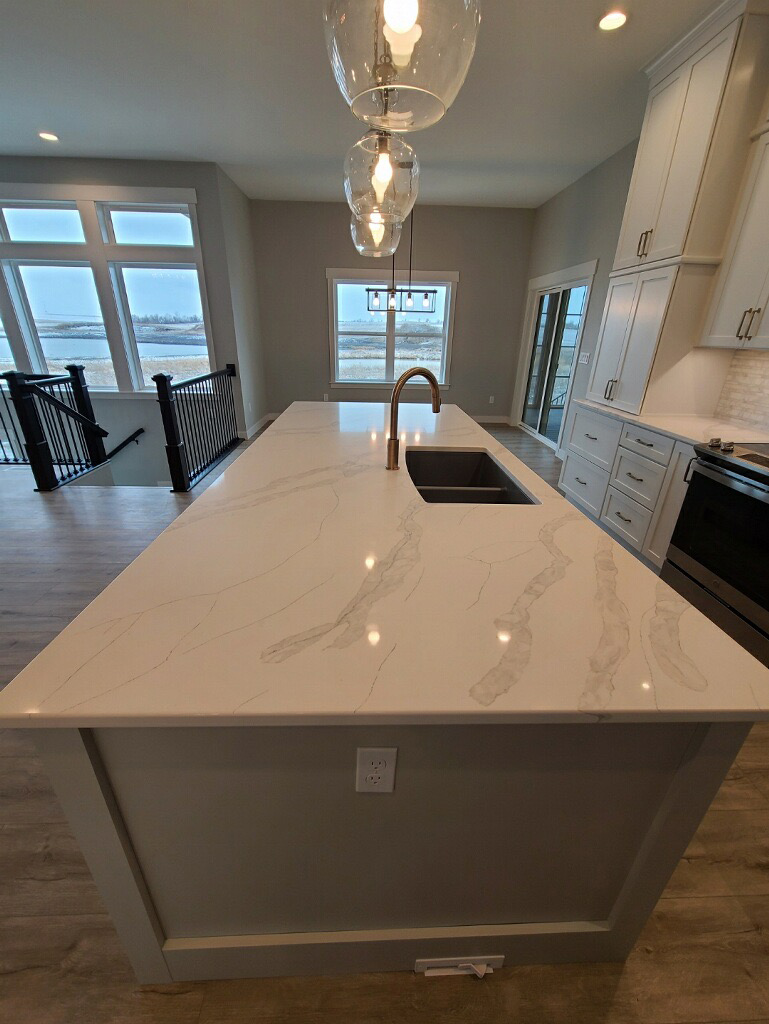
23 Sep The Differences Between Quartz And Quartzite
Quartz and quartzite sound like they should be referring to essentially the same thing, and in one important way, they are similar–they are both very durable. In fact, in terms of hardness, they both outperform granite. But while some people use the words interchangeably, they are distinct substances with subtle, but important differences that you should be aware of before you decide on one over the other. Let’s take a look at what each substance is and the pros and cons of each.
Quartzite
Quartzite is a substance formed naturally in the earth as heat and pressure are applied to sandstone and fused with quartz (the naturally-occuring mineral). Quartzite is quarried like limestone or marble, removed, and cut to size and shape in one single slab. It typically comes in shades of white or light grey but different minerals in the stone can provide slight variations. The labor required for this process makes it more expensive.
Quartzite looks similar to marble. Since it comes from nature, no two slabs of quartzite will ever be the same. It has a look that is more fluid and irregular making it an excellent choice if you’re going for a “natural” look. Because of this however, you don’t have as many options in terms of color. Quartzite is also naturally UV and heat-resistant making it a great option for kitchen countertops. While it is more scratch-resistant, it is less dense which makes it more susceptible to staining which is why a sealant is typically applied and should be reapplied after 4 or 5 years. But thanks to the natural color variations of quartzite, it disguises small imperfections that may occur over time. Quartzite is more difficult and costly to install, especially in areas with many corners.
Quartz
Quartz (or engineered quartz) is manmade. It’s created using about 90% naturally-occurring ground quartz (the same mineral found in quartzite) and binding it with a mix of resins, polymers, pigments and other materials such as bits of glass which vary by manufacturer.
Because it is engineered and not mined, quartz is less expensive. It is stronger, non-porous, and more durable than quartzite, requiring no sealing and virtually no maintenance. It is also more versatile allowing more color options including solid colors. With improved engineering techniques over time, engineered quartz can even be made to look more like quartzite. Because of these benefits, and because quartz countertops can be repaired, it’s a highly sought-after material in homes. However since it’s not UV-resistant, UV discoloration can occur and it can be damaged by heat. It can also be chipped more easily than quartzite. Because it’s not cut from a single slab, there can be visible seams.
If you desire style options, a consistent look, material that won’t break the bank but will provide durability and longevity without the maintenance, quartz is a great option for you. However, if you want a surface that will stand out as a beautiful, one-of-a-kind creation with a natural appearance and don’t mind a little upkeep, consider quartzite as a great option.
The team at Dahl Custom Homes is here to help you with any and all of your Corridor custom home needs, so please don’t hesitate to contact us if we can answer any questions or provide you with more information.

Sorry, the comment form is closed at this time.